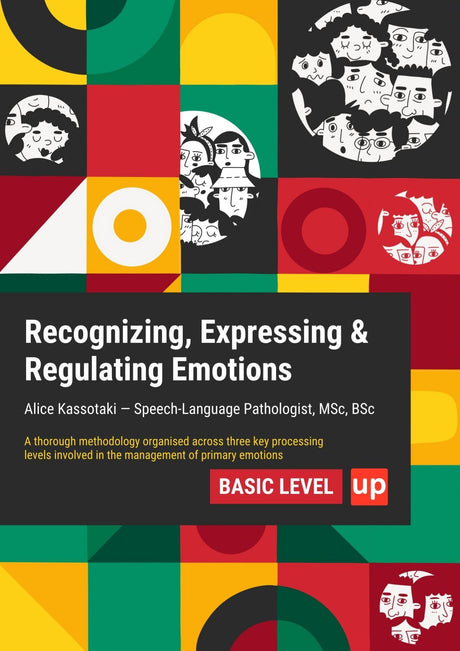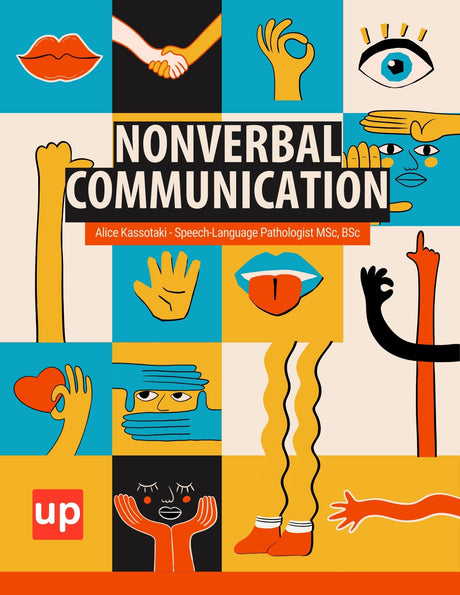As a parent, you notice the subtle things: the pause before your child answers a question, the frequent requests to repeat yourself, or the trouble they have recounting their day at school. Every child grows at their own speed, but ongoing communication problems can show an invisible challenge called Language Processing Disorder (LPD). This condition isn’t about hearing or intelligence; it's about how the brain makes sense of the words we hear and use. For the millions of children affected, this can be a source of significant frustration for both them and their family.
When a child has a language disorder, the pathway from hearing speech to understanding its meaning is disrupted. Understanding this complex issue is the first step toward providing the support your child needs to enhance their language development and navigate their world with confidence. This guide is designed to empower you with essential knowledge and practical strategies to support your child's unique language journey in daily life, providing a clear roadmap for home, school, and beyond.
Key Points
- Language Processing Disorder (LPD) affects how the brain interprets and uses spoken and written language, making it difficult to understand and express ideas despite normal hearing and intelligence.
- LPD can impact both receptive (understanding) and expressive (using) language, often leading to academic, social, and emotional challenges that require early diagnosis and targeted support.
- Speech-language therapy, visual supports, structured communication strategies, and strong collaboration between parents, schools, and professionals form the foundation for successful intervention.
Understanding Language Processing Disorder: Beyond the Basics
Before you can effectively support your child, it's crucial to grasp what LPD is, how it impacts language processing, and how it differs from other related conditions. This foundational knowledge will help you advocate for your child and implement the right strategies to build their language skills.
Defining Language Processing Disorder (LPD)
Language Processing Disorder is a brain condition. It affects how a person understands and uses spoken and written language. It is a type of communication disorder that is neurological in origin; it is not an issue of intelligence or a hearing impairment. Individuals with LPD can hear words perfectly, but their brain has trouble interpreting the meaning behind them. This processing delay can make following conversations, understanding instructions, and expressing thoughts a daily challenge, impacting nearly every aspect of life.
The Core Challenge: How Language Processing Works (and Doesn't)

With LPD, the brain's pathway for understanding and using language is disrupted, unlike the direct and efficient process in a neurotypical brain.
For most people, language processing happens instantly and automatically. We hear words, our brain deciphers their meaning from the incoming auditory information, and we formulate a response. For a child with LPD, this intricate process is disjointed. They might struggle to:
- Distinguish between similar-sounding words (e.g., "seventy" and "seventeen").
- Understand long or complex sentences.
- Grasp figurative language like jokes, sarcasm, or idioms.
- Keep up with the pace of a typical conversation.
The core of the condition is a breakdown in the brain's ability to efficiently and accurately comprehend and formulate language.
Types of Language Processing Challenges
LPD generally falls into two main categories, though many children experience a mix of both, known as Mixed Receptive-Expressive Language Disorder.
- Receptive Language Issues: This involves difficulty understanding language. A child might struggle to follow directions, answer questions appropriately, or comprehend stories. They may seem inattentive because they cannot process what is being said to them in real-time.
- Expressive Language Issues: This relates to difficulty using language to communicate. A child may have a limited vocabulary, use grammatically incorrect sentences, have trouble retelling a story, or find it hard to express their thoughts and feelings clearly.
LPD vs. Auditory Processing Disorder (APD): A Crucial Distinction for Parents
Many parents hear the terms LPD and Auditory Processing Disorder (APD) used interchangeably, but they are distinct conditions. Understanding the difference is critical for getting the right support:
- Auditory Processing Disorder (APD), sometimes called Central Auditory Processing Disorder (CAPD), is a hearing issue related to how the brain processes sounds. A child with APD has normal hearing, but their brain struggles to filter, organize, and interpret auditory information, especially in noisy environments. The trouble is with the perception of the sound itself.
- Language Processing Disorder (LPD) is a language issue. While poor auditory processing can contribute to LPD, the core problem is in assigning meaning to words, not just hearing them clearly. A child can have LPD without having APD, and vice versa.
LPD and Other Conditions: A Brief Overview
LPD can co-exist with other conditions like ADHD, dyslexia (a common learning disability), and Autism Spectrum Disorder. Symptoms like trouble following directions or social communication problems overlap. This overlap makes diagnosis hard. Qualified professionals must do a full evaluation to tell these conditions apart. They also check for any disorders that happen at the same time to ensure a comprehensive treatment plan.
Recognizing the Signs: What LPD Looks Like in Daily Life

The signs of LPD can be subtle and are often mistaken for inattention, defiance, or behavioral problems. As a parent, observing your child in various settings can provide valuable clues about their language processing challenges.
Early Indicators and Language Delays in Young Children
In toddlers and preschoolers, early signs may include delayed speech milestones, limited vocabulary growth, or trouble learning the alphabet and nursery rhymes. They might seem to tune out during story time, struggle to answer simple "who, what, where" questions, or rely heavily on gestures instead of words to communicate their needs.
Common Signs and Language Difficulties at Home
At home, in a familiar setting, you might notice your child has trouble following multi-step spoken instructions like, "Go upstairs, brush your teeth, and then pick out a book." They may frequently say "What?" or "Huh?", even in a quiet room, because they need extra time to process what was said. They might struggle to participate in family conversations, often missing the point of a story or giving off-topic responses that suggest a disconnect in comprehension.
Observable Issues with Language Processing in Educational Settings (School)
In the classroom, the demands on language skills increase, often making LPD more apparent. A student might find it hard to understand lectures. They may also struggle to remember spoken information or understand word problems in math. These challenges can significantly impact academic performance and are often the first red flag that leads to an evaluation.
Social Interaction and Communication Challenges
Social life relies heavily on fast-paced verbal communication and understanding subtle social cues. Children with LPD may find it hard to keep up with conversations among peers, understand jokes, or interpret the nuances of social interaction. This can lead to social withdrawal, anxiety in conversations, or misunderstandings with friends, impacting their ability to form and maintain relationships. Developing strong communication skills is essential for social success.
The Diagnostic Journey: Getting the Right Answers for Your Child
If you suspect your child has a language processing disorder, pursuing a formal diagnosis is a critical step. It is the key that unlocks access to appropriate support, effective treatment options, and necessary accommodations at school.
Why Early Diagnosis is Key
It is very important to find and treat the problem early. The sooner a child receives targeted support from professionals like speech-language pathologists, the better they can develop coping strategies and strengthen their language abilities. An early diagnosis helps prevent years of academic struggle and social frustration, preserving the child's self-esteem and setting them on a path to success.
The First Step: Ruling Out Hearing Loss
Because some symptoms of LPD and APD overlap with hearing problems, the first and most essential step is a comprehensive hearing evaluation with an audiologist. This is critical to rule out any degree of hearing loss or other physical hearing impairments before exploring auditory or language processing issues.
Who Can Diagnose LPD? Building Your Multidisciplinary Team
Diagnosing LPD often requires a collaborative, multidisciplinary team. A Speech-Language Pathologist (SLP), also known as a language therapist, is the primary professional who assesses and diagnoses language disorders. The team may also include:
- An audiologist to assess for APD.
- An educational psychologist to evaluate for co-occurring learning disabilities.
- Your child's pediatrician and teachers to provide developmental history and observational insights.
The Assessment Process: What to Expect
The evaluation typically involves a series of standardized tests that assess various aspects of receptive and expressive language. The SLP will evaluate vocabulary, grammar, language comprehension, and the ability to use language in social contexts. The process also includes detailed observations of the child and interviews with parents and teachers to get a complete picture of the child's communication abilities in different environments.
Empowering Your Child: Essential Strategies for Daily Support and Development

A diagnosis is not an endpoint but a starting point. With the right strategies and consistent support from parents, educators, and therapists, children with LPD can learn, grow, and thrive.
The Foundation of Treatment: Speech-Language Therapy
Speech therapy is the cornerstone of treatment for LPD. A qualified SLP will design an individualized program to target your child's specific areas of difficulty. Therapy helps build vocabulary. It improves understanding, teaches grammar rules, and boosts social communication skills. Sessions may focus on a wide range of goals, from following directions to understanding figurative language and improving conversational skills.
Practical Strategies for Home: Fostering Communication and Language Learning
As a parent, your role is vital in reinforcing the skills learned in therapy. You can support your child's development by:
- Speaking Clearly and Simply: Use shorter, concise sentences and pause between ideas to give your child ample time to process.
- Using Visuals: Supplement verbal instructions with gestures, pictures, checklists, or written lists. Visuals provide a concrete reference that supports auditory comprehension.
- Gaining Their Attention: Say your child's name and wait for eye contact before speaking to ensure you have their focus.
- Checking for Understanding: Ask them to repeat instructions back to you in their own words. This confirms comprehension without simply asking "Do you understand?"
- Exploring Gestalt Language Processing: Some children are gestalt language learners, meaning they learn language in chunks or scripts ("whole language gestalts") rather than word-by-word ("analytic language development"). If your child often repeats lines from shows or books, work with your SLP to understand how to model and expand on these gestalts to build flexible communication.
Navigating School: Collaborative Strategies for Academic Success
Collaboration with your child's school is crucial for their success. Work with the educational team to implement effective classroom accommodations, which may be part of an Individualized Education Program (IEP) or 504 Plan. Effective strategies include:
- Preferential Seating: Placing the child near the teacher and away from auditory and visual distractions like doors or windows.
- Visual Aids and Written Instructions: Using whiteboards, charts, and providing written copies of spoken instructions to support verbal lessons.
- Providing Notes or Outlines: Giving the student a copy of lesson notes reduces the cognitive load of listening, processing, and writing simultaneously.
- Allowing Extra Time: Granting additional time for tests and assignments that require significant reading, comprehension, and writing.
Beyond Language: Addressing the Wider Aspects of Life with LPD

LPD impacts more than just communication; it affects a child's emotional regulation, social development, and overall well-being. A holistic approach to support is essential.
Enhancing Social Interaction and Friendships
Help your child navigate the social world by practicing social scenarios at home. Role-play conversations, discuss how to join a group, or talk through social situations they find confusing. Structured social activities, like a robotics club or art class, can be less overwhelming than unstructured playtime and provide a shared interest to build friendships around.
Supporting Emotional Well-being and Behavioral Health
Struggling to communicate can be incredibly frustrating. Acknowledge your child's feelings and praise their effort, not just their success. Help them develop self-advocacy skills so they can learn to ask for what they need, such as saying, "Can you please repeat that?" or "Can you say that in a different way?" This empowers them to take control of their communication challenges.
LPD as an Invisible Disability: Understanding Its Implications
Because LPD is not physically apparent, others may misinterpret a child's struggles as laziness, defiance, or a lack of intelligence. Teaching family, friends, and teachers about this condition is important. It helps create a more understanding and supportive environment where your child feels seen and validated. Your advocacy can transform their experience.
The Long-Term Journey: Advocacy, Growth, and a Future of Confidence
Living with LPD is a lifelong condition, but it does not have to be a barrier to a successful, fulfilling life. With ongoing support and the right strategies, individuals can manage their challenges effectively. Your role as a parent will evolve from direct support to that of a coach, empowering your child to become their own best advocate in higher education, the workplace, and their personal relationships.
Conclusion: Embracing and Supporting Your Child's Unique Language Journey
Understanding Language Processing Disorder is the most powerful tool a parent can have. If you notice the signs, get a proper diagnosis. Then use steady support at home and school. This can greatly help your child's growth. This journey requires patience, collaboration with professionals, and a deep well of empathy. Remember that your child’s brain is simply wired differently. When you help your child understand and communicate better, you do more than manage a condition. You help your child find their voice. You also help them face the world with confidence and strength.
Frequently Asked Questions (FAQ)
What is Language Processing Disorder (LPD)?
Language Processing Disorder is a neurological communication condition that disrupts how the brain understands and produces language. A child with LPD can hear words clearly but struggles to interpret their meaning, follow conversations, or express thoughts effectively.
How is LPD different from Auditory Processing Disorder (APD)?
APD involves difficulty interpreting sounds, while LPD concerns understanding and using language meaningfully. A child with LPD may process sounds normally but has trouble assigning meaning to words or organizing language for expression.
What are common signs of LPD?
Signs include frequent requests for repetition, difficulty following directions, trouble understanding stories or lessons, limited vocabulary, or challenges expressing thoughts. In social situations, children may appear inattentive or give off-topic responses.
How is LPD diagnosed?
A multidisciplinary team—usually including a Speech-Language Pathologist (SLP), audiologist, and educational psychologist—conducts standardized assessments of receptive and expressive language, hearing, and overall communication. Teachers and parents also contribute valuable observations.
Can LPD occur with other conditions?
Yes. LPD often co-exists with ADHD, dyslexia, or Autism Spectrum Disorder. Because symptoms overlap, professional evaluation is crucial to distinguish between conditions and design an effective, individualized treatment plan.
What treatments are available?
Speech-language therapy is the primary treatment. Therapists work on comprehension, vocabulary, sentence formation, and conversational skills. Strategies include visual supports, structured routines, simplified instructions, and repetition to strengthen understanding.
How can parents support a child with LPD at home?
Use clear, simple sentences and visual cues like charts or checklists. Pause to give processing time, and confirm understanding by asking your child to repeat instructions. Encourage reading, storytelling, and role-playing to practice expressive skills in a fun way.
What school accommodations can help?
Effective supports include preferential seating, written instructions, visual aids, extra processing time, and access to class notes. Collaboration through an IEP or 504 Plan ensures the child receives consistent, structured support across settings.
How does LPD affect social and emotional well-being?
Children with LPD may feel misunderstood or frustrated, which can lead to withdrawal or anxiety. Encouraging open communication, celebrating effort, and teaching self-advocacy (“Can you repeat that, please?”) help build confidence and resilience.
Is LPD a lifelong condition?
Yes, but with consistent therapy, self-awareness, and coping strategies, individuals with LPD can thrive academically, socially, and professionally. Early intervention and ongoing support are key to long-term success.
Original content from the Upbility writing team. Reproducing this article, in whole or in part, without credit to the publisher is prohibited.
References
- American Speech-Language-Hearing Association (ASHA). (n.d.). Language Processing Disorders.
- Tallal, P. (2000). Language comprehension in language-learning impaired children. Philosophical Transactions of the Royal Society of London, 355(1403), 1471–1483.
- Catts, H. W., & Kamhi, A. G. (2017). Language and Reading Disabilities (3rd ed.). Pearson.
- Leonard, L. B. (2014). Children with Specific Language Impairment. MIT Press.
- National Institute on Deafness and Other Communication Disorders (NIDCD). (n.d.). Speech and Language Development and Disorders.









